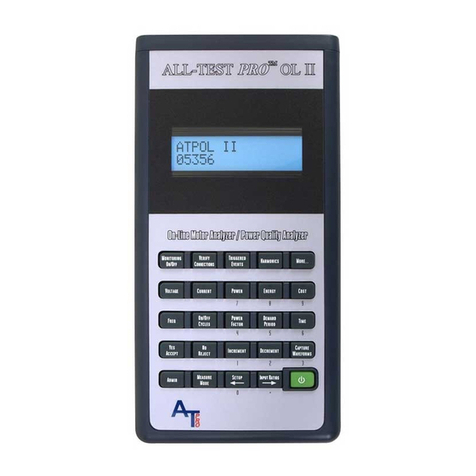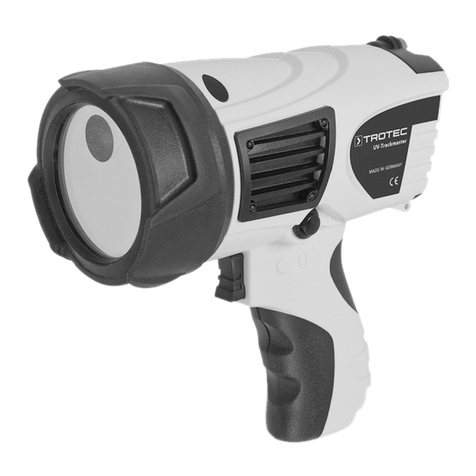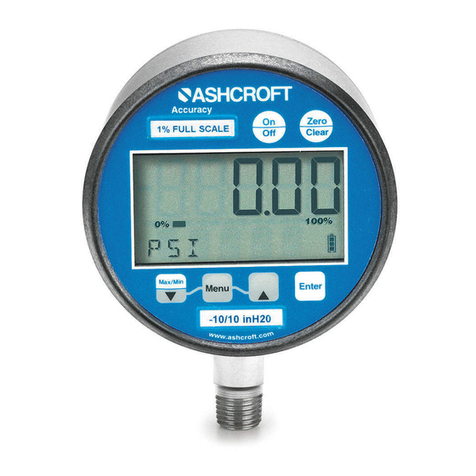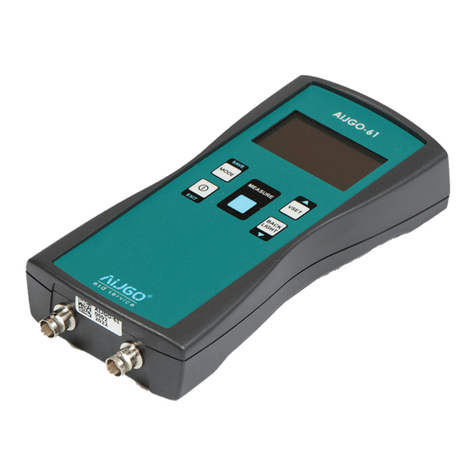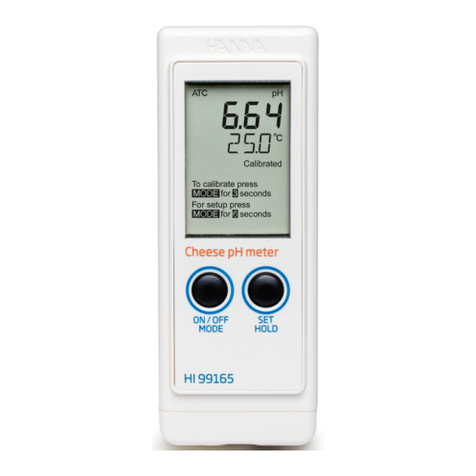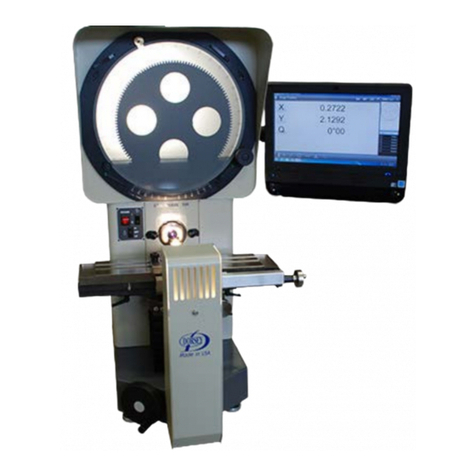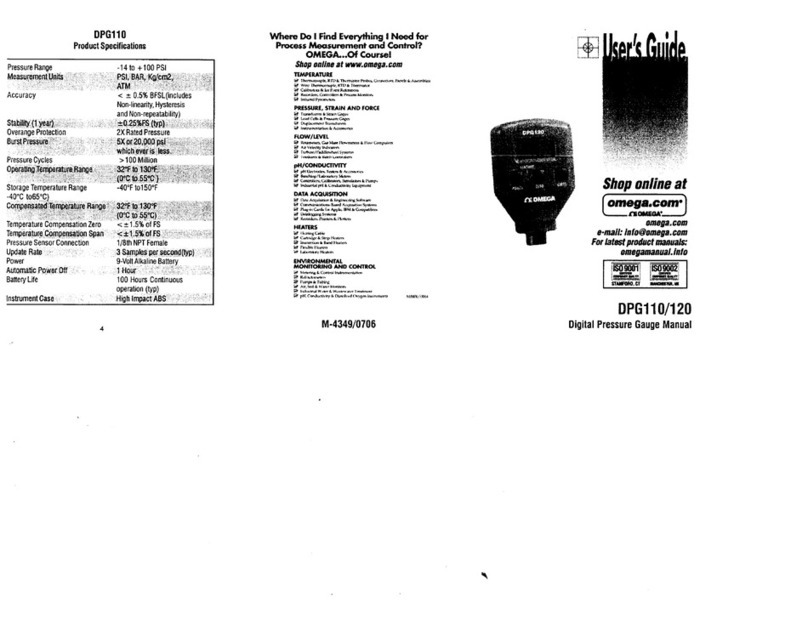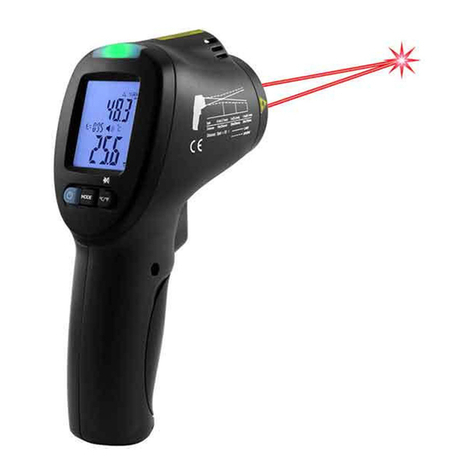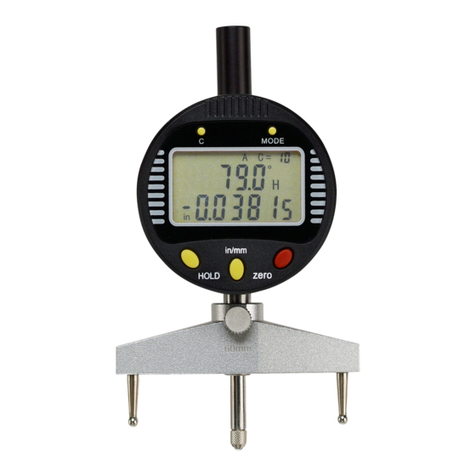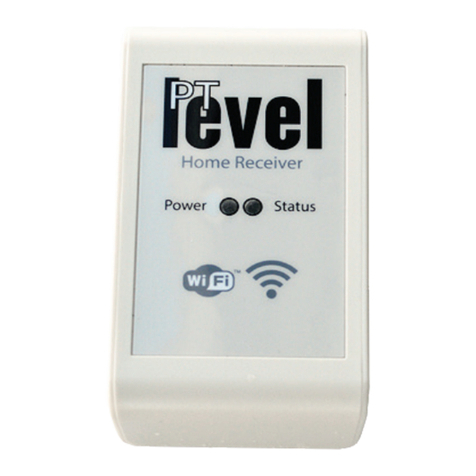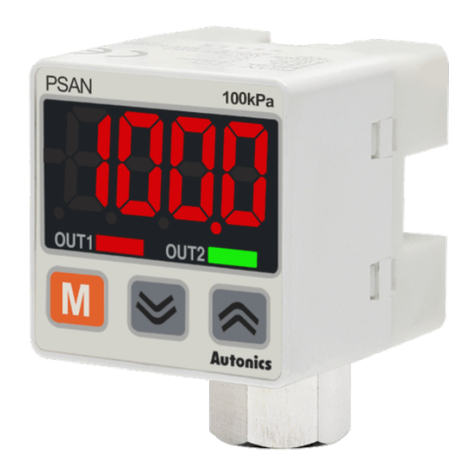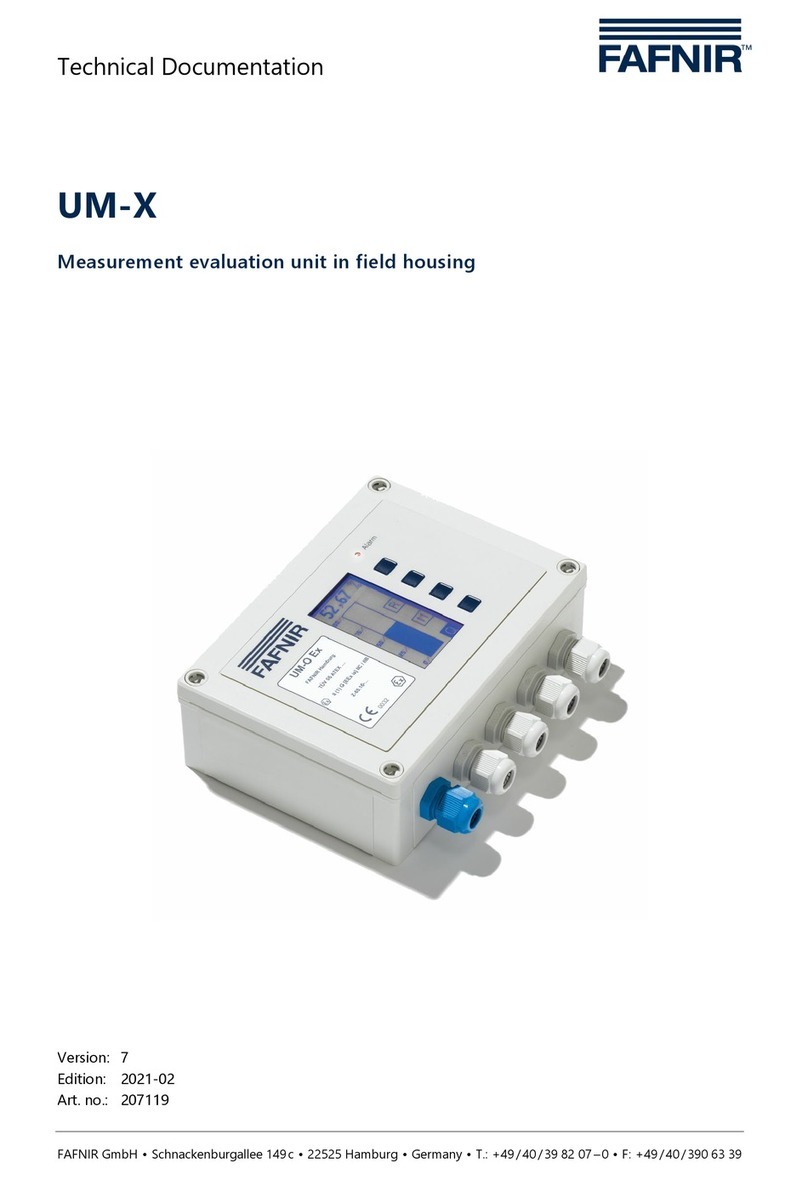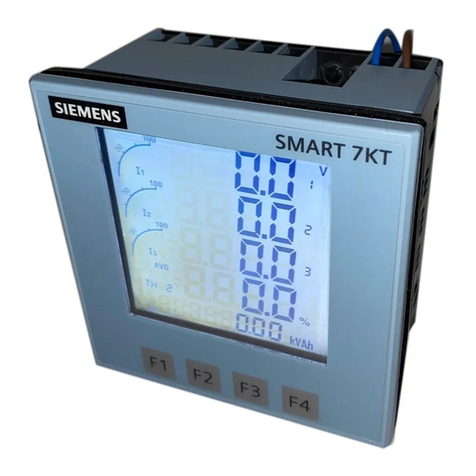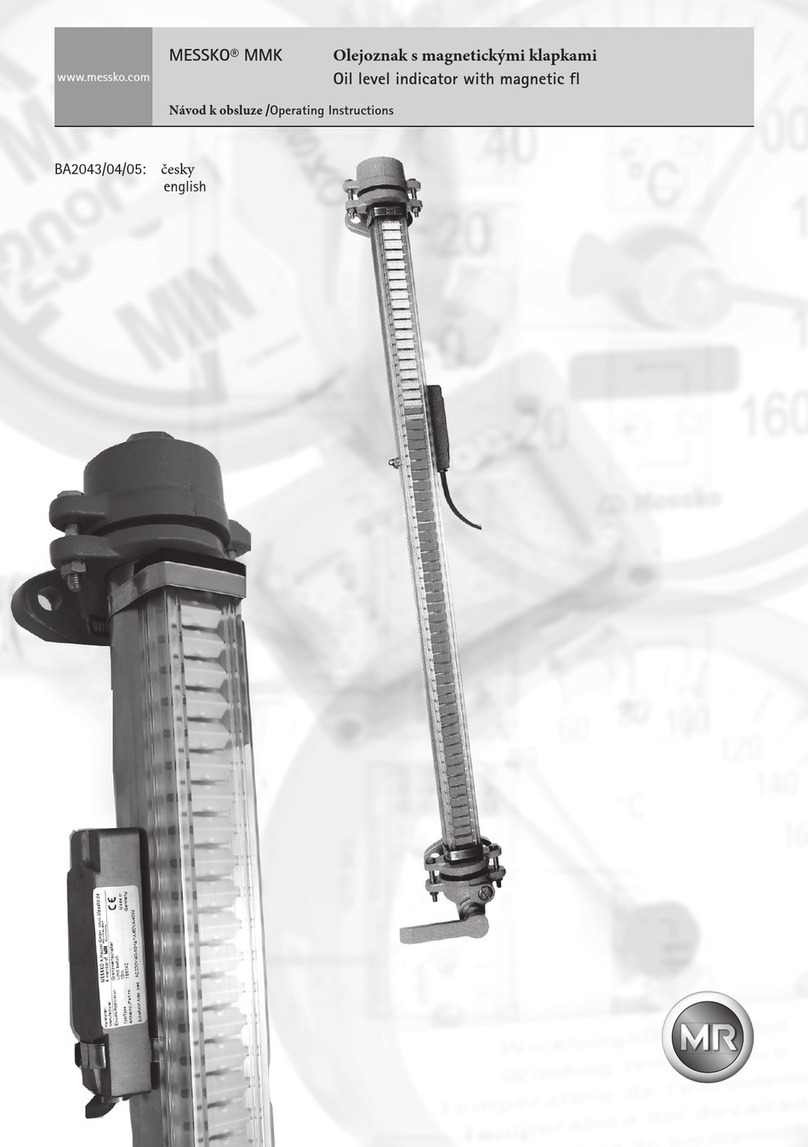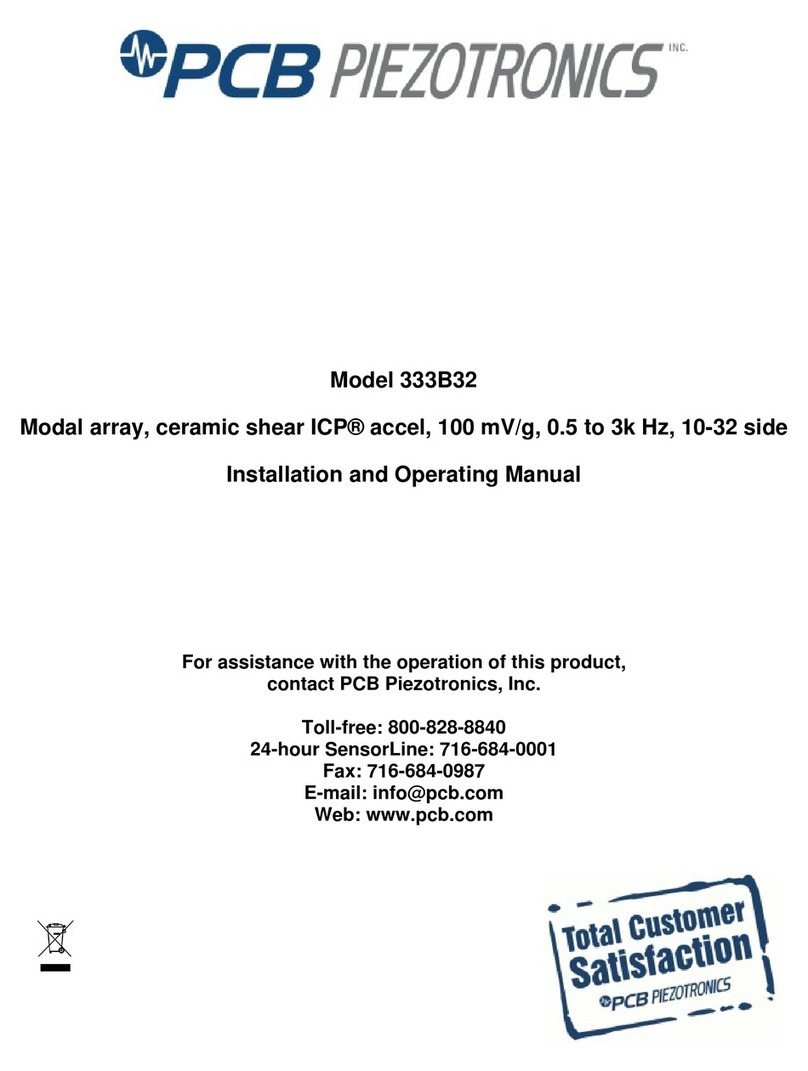ALL-TEST PRO AT31 User manual

©2011, ALL-TEST Pro, LLC rev 2011-11F
ALL-TEST Pro, LLC
ALL-TEST PRO® 31

©2011, ALL-TEST Pro, LLC rev 2011-11F

©2011, ALL-TEST Pro, LLC rev 2011-11F
Table of Contents
I. Introduction.....................................................................................................5
II. Safety.............................................................................................................6
Instrument Warnings and Considerations .........................................................6
General Safety Considerations .........................................................................6
III. ALL-TEST PRO® 31 Kit Components.......................................................7
Instrument Operation .......................................................................................7
Input Section................................................................................................7
Display Section............................................................................................8
Indicator Light Section.................................................................................8
Display Screen.............................................................................................8
Keypad Section............................................................................................9
Instrument Test Leads................................................................................10
IV. Testing a Three Phase Induction Squirrel Cage Motor..........................11
Operating Procedure 3-Phase Motors.............................................................11
Winding Test .................................................................................................11
Turn the Instrument On..............................................................................12
Select the Motor Test .................................................................................12
Observe/Record the Test Data....................................................................12
ERROR CODES........................................................................................13
Continue with Other Phases .......................................................................14
Continue with Last Phase ...........................................................................15
Phase Balance Test ........................................................................................17
Insulation Resistance Testing.........................................................................20
Rotor Test......................................................................................................22
Bar Test .....................................................................................................22
Wave Form Test.........................................................................................23
Changing the Motor Test Frequency ..............................................................24
V. Additional Functions and Features...........................................................26
Electro-Magnetic Interference (EMI): ............................................................26
Resetting the Unit ..........................................................................................27
VI. Charging Your ALL-TEST PRO® 31.......................................................28
VII. Data Interpretation Three Phase Motors................................................29
Data Interpretation Tables..............................................................................29
Additional Data Interpretation Considerations Three Phase Motors............30
Test Location .............................................................................................30
Rotor Windings..........................................................................................30
Confirming Suspected Winding Shorts.......................................................30
Method 1: Rotor Compensation..................................................................31
Method 2: Variable Frequency Test............................................................31
VIII. DC Motor Testing....................................................................................32
Testing an Assembled DC Motor ...............................................................33
Series DC motor.........................................................................................33
Compound or Shunt DC motor...................................................................33

©2011, ALL-TEST Pro, LLC rev 2011-11F
Testing Shunt Field ....................................................................................33
Armature Testing .......................................................................................33
DC Motor Analysis........................................................................................34
IX. Additional Test Methods...........................................................................35
Wound Rotor Motors.....................................................................................35
Wye-Delta Motors .........................................................................................35
Capacitor Testing...........................................................................................36
X. Tech Support and Information...................................................................37
XI. Available Accessories for the ALL-TEST PRO® 31...............................37
XII. Training Class...........................................................................................37

ALL-TEST PRO®31 User Manual
©2011, ALL-TEST Pro, LLC www.alltestpro.com rev 2011-11F5
I. Introduction
The light-weight, hand-held instrument can be used for immediate detection of winding shorts,
insulation to ground faults, cable faults and more on AC/DC electric motors, transformers, coils,
machine tool equipment, linear motors and much more. Testing can be performed at the motor
connection box, the disconnect, or motor control center hundreds of feet away.
The ALL-TEST PRO® 31 (AT31) is designed to provide a simple test method for:
·troubleshooting faults
·commissioning new and rebuilt machines
·verifying quality assurance in electric motors and other wound equipment.
The patented tests performed for early winding fault detection:
·winding impedance test
·phase angle
·I/F current frequency response tests
·EMI (Electro-Magnetic Interference) test for detection of low-level EMI currents that can
affect readings and may be the result of other faults within the motor circuit
Note: The ALL-TEST PRO® 31 provides real time measurements of the on-going test. When
combined with the ALL-TEST IV PRO™provides the most comprehensive off-line motor analysis
system available at any price.
Insulation Resistance to ground: To prevent electrical shocks and to assure safety of personnel the AT31
provides an insulation to ground test. The insulation resistance test provides either 500 or 1,000 VDC, to
measure the insulation resistance up to 500 Meg-Ohm.

ALL-TEST PRO®31 User Manual
©2011, ALL-TEST Pro, LLC www.alltestpro.com rev 2011-11F6
II. Safety
CAUTION: The AT31 is designed to test de-energized equipment safely and quickly.
Improper application of the AT31 on live circuits is a danger to the user and will result in
the destruction of the testing circuit, requiring instrument replacement.
Instrument Warnings and Considerations
The ALL-TEST PRO® 31 is a CE registered instrument.
The following is a list of considerations for equipment life and accurate data collection:
Ensure that all power has been removed from the circuit being tested, including static power
stored in capacitors –Discharge all capacitors being tested.
Attaching the AT31 to live voltage will destroy the unit and void the warranty.
Do not attempt to change the batteries. Contact your distributor of the AT31, ALL-TEST Pro. LLC
at 860-399-4222 or via email, support@alltestpro.com, to have the battery pack replaced.
Do not open the instrument. Electrostatic charges may damage surface mount electronics. Please
contact your vendor or ALL-TEST Pro authorized repair center.
Use only the supplied charger for charging the instrument. It is an integral part of the charging
circuit. Using the wrong charger will damage your instrument.
General Safety Considerations
Following are general safety considerations for using the AT31 motor tester:
The AT31 is an off-line motor tester. All power and residual power must be disconnected. It
provides a safe method of testing your electric motors.
Follow all safety rules of your company and OSHA (or country equivalent) for off-line testing
methods, including appropriate Personal Protective Equipment (PPE). Improper or unsafe operation of
the equipment is the sole responsibility of the user.
For MCA testing, the AT31 sends out a low voltage, high frequency signal not harmful to the
technician or most electronic equipment (variable frequency drives and soft starts). However, electronic
equipment and personnel must observe appropriate safety considerations (disconnect electronic
equipment) when performing the insulation to Ground resistance test (Meg-Ohm) test.

ALL-TEST PRO®31 User Manual
©2011, ALL-TEST Pro, LLC www.alltestpro.com rev 2011-11F7
III. ALL-TEST PRO® 31 Kit Components
Figure 1: AT 31 Kit
The AT31 Kit contains all of the necessary components necessary to test most electrical machinery:
A. ALL-TEST PRO® 31 instrument
B. Batteries (installed)
C. Test leads and clips
D. Charger (115 or 230 Volt)
E. Manual on CD Rom
F. Carrying Pouch
G. Reset Key (Only sent with units before Serial number 2029)
Instrument Operation
The instrument is divided up into three working areas:
1. Input Section
2. Display Area
3. Keypad
Input Section
The input section provides all the external connections to the ALL-TEST PRO® 31
A. Test lead port
B. Charger port
C. Ground test lead port for Insulation to Ground
Measurements
D. Reset Button (Serial number 2029 and higher)
AB C
D

ALL-TEST PRO®31 User Manual
©2011, ALL-TEST Pro, LLC www.alltestpro.com rev 2011-11F8
Display Section
The display section is divided into 2 sections:
1. Indicator Lights
2. Display Screen
The Indicator Lights (section 1) informs the operator when an operation or test is being performed.
The Display screen (section 2) allows the operator to select tests to be performed by the AT31.
Indicator Light Section
1. Charging light –Indicates that the unit is charging, light is illuminated red while charging, light
is green when fully charged.
2. Test indicator light –Light is illuminated green when the unit is testing
3. Insulation Test indicator light –The light illuminates yellow when the instrument is testing
insulation resistance. Caution –Applied voltage is 500 or 1,000 Volts DC.
Display Screen
The display screen has individual icons to select and perform the various motor and winding tests.

ALL-TEST PRO®31 User Manual
©2011, ALL-TEST Pro, LLC www.alltestpro.com rev 2011-11F9
1. Z/ψIcon performs the Impedance (Z), Phase Angle (ψ), Current/Frequency (I/F) and Phase
Balance tests (used to identify developing winding faults).
2. ROT Icon performs the Rotor test (used to find squirrel cage induction motor rotor faults).
3. INS Icon performs the Insulation to ground resistance test (used to verify that the insulation to
ground resistance is sufficient to prevent electrical shock).
4. Battery charge level indicator. A fully charged battery will have 7 bars (it is recommended to
keep the AT31 on charge when not in use to ensure proper operation).
5. PWR OFF Icon turns the instrument off (the AT31 will automatically shut-off after about 5
minutes).
6. EMI Icon tests for EMI signals within the Motor System that could cause errors in the AT31 test
results.
Keypad Section
The keypad section provides keys to operate and control the functions of the AT31.

ALL-TEST PRO®31 User Manual
©2011, ALL-TEST Pro, LLC www.alltestpro.com rev 2011-11F10
1. Up direction and MODE key returns the AT31 display screen to the main menu.
2. F1/ON and Left direction key turns the AT31 on and moves the curser across the display screen
toward the left.
3. ZERO /OK (Selection) key selects which test to perform and provides reference selection to
calculate % difference of the measured impedance value.
4. Down direction and TEST key toggles between display screens and performs selected tests.
5. Right direction and F2/Hz key allows the operator to change the test frequency for the winding
test and moves the cursor across the display screen to the right.
Instrument Test Leads
The ALL-TEST PRO® 31 uses a 15 pin DB connector for winding testing. The red test lead is the
output and the black test lead, is the return. For insulation testing, the yellow test lead should be
connected to ground.

ALL-TEST PRO®31 User Manual
©2011, ALL-TEST Pro, LLC www.alltestpro.com rev 2011-11F11
IV. Testing a Three Phase Induction Squirrel Cage Motor
Testing can be performed remotely from the motor control center, the motor disconnect or at the motor
itself. This instruction is provided to demonstrate all of the features of the ALL-TEST PRO® 31, which
can also be used to evaluate other types of electric machines.
Note: The M2000 demo motor is used in this manual for procedural purposes only, it is not designed to
simulate faults or test other features of the ALL-TEST PRO® 31
Materials for Testing with the ALL-TEST PRO® 31Figure 2: Equipment and Materials
To perform a motor test with the ALL-TEST PRO® 31 requires:
·ALL-TEST PRO® 31
·Test leads and lead clips
·A pen and paper (or a copy of the Motor Test Form on page 38).
Testing can be performed directly at the motor, at the nearest motor control center or disconnect. For
purposes of this manual, we will test at the motor using an M2000 training motor, this is for procedure
only (the M2000 is not designed to simulate faults with the AT31).
Operating Procedure 3-Phase Motors
Winding Test
Measures and displays the winding impedance (Z), Phase Angle (ψ), Current Frequency response (I/F)
and Impedance phase balance.
1. Label the three motor leads T1, T2, T3.
Note: It is very important to take the data in the same order
for long term trending.
2. Connect the Test leads to the Motor leads T1 & T2.

ALL-TEST PRO®31 User Manual
©2011, ALL-TEST Pro, LLC www.alltestpro.com rev 2011-11F12
Note: For quick trouble shooting the order of the readings is not important. However, for long
term trending of the data, testing should be performed in the same order each time.
Optional: Connect the Yellow lead to ground, this is only required for measuring insulation to ground.
Turn the Instrument On
Press and hold the F1/ON key for 1 to 3 seconds. This will bring up the main display screen.
Select the Motor Test
1. Using the ◄F1 and ►F2, keys highlight the Winding Test icon
2. Press the ZERO/OK Key to select the Winding Test icon (Z/ψ)from the main menu.
Observe/Record the Test Data
1. The default value is 200 Hz, as displayed in the bottom right corner of the display screen.
a. The value of the impedance should be between 1 and 999 Ω. If the Z is less than 1 or
greater than 999 Ωchange the test frequency of the winding test (see Changing the
Motor Test Frequency on page 24).
b. The current frequency response value (I/F) must be between -15 and -50, if it is not
change the frequency of the winding test.
c. If the phase angle (Fi) is less than 15°, change the winding test frequency.
Note: If any of the measurements fall outside the above ranges, the test is not valid.
2. Display screen 2 displays the results of the current frequency test. To view display screen 2
Press the TEST key.

ALL-TEST PRO®31 User Manual
©2011, ALL-TEST Pro, LLC www.alltestpro.com rev 2011-11F13
Display Screen 1
Display screen 1: Displays the measured impedance in ohms 107, phase angle in degrees 66°, and the
frequency of the winding test, 200 Hz. The screen number (1) is displayed in the upper left hand corner.
Display Screen 2: Displays the results of the Current Frequency (I/F) response test (-45), (the current at
400 Hz is 45% lower than the current at 200 Hz). The doubled test frequency is displayed in the lower
right hand corner; screen number (2) is displayed in the upper left hand corner. Note: The 16% shown
in upper right corner is the change in phase angle when the test frequency is doubled. Not used for
analysis purposes.
1. To return to the Display Screen 1 Press the TEST key again, this displays the impedance and
phase angle measurement.
2. Record the measured values on the Motor Test Form.
ERROR CODES
If the impedance readings are out of range an error code will be displayed on the measurement screen.
·E1 error code means the impedance value is greater than 1000 ohms.
·E2 error code means the impedance value is greater than 10,000 ohms.
ALL
-
TEST
Pro®
31 Motor Test
Form
Motor ID:
Location:
Test Date:
Test Frequency
Phase
1-2 Phase
1-3 Phase
2-3
Impedance
(Z) 107
Phase
Angle (°) 66
Z-Test or
I/F -45
Display Screen 2

ALL-TEST PRO®31 User Manual
©2011, ALL-TEST Pro, LLC www.alltestpro.com rev 2011-11F14
Continue with Other Phases
1. Move the test leads to T1 & T3 to make the measurements on the next phase.
2. Read the Impedance (Z) and Phase Angle (ψ) values from display screen 1 for winding. Do not
fill in the phase balance until all three phases have been measured.
3. Depress the TEST key to display the Current Frequency Response (I/F).
Winding 2 Current
Frequency Response

ALL-TEST PRO®31 User Manual
©2011, ALL-TEST Pro, LLC www.alltestpro.com rev 2011-11F15
4. Record these test results on the Motor Test Form.
Continue with Last Phase
1. Move the Test Leads to T2 & T3
ALL-TEST Pro® 31 Motor Test Form
Motor ID:
Location:
Test Date:
Test Frequency
Phase
1-2 Phase
1-3 Phase
2-3
Impedance (Z) 107 107
Phase Angle (°) 66 66
Z-Test or I/F -45 -45
Phase balance (opt)
Ins Resistance Test
Voltage
Was rotor set to lowest value during phase balance test? Y__ N__
Rotor test performed? Y___ N___
Comments:
© ALL-TEST PRO

ALL-TEST PRO®31 User Manual
©2011, ALL-TEST Pro, LLC www.alltestpro.com rev 2011-11F16
2. Read the Impedance (Z) and Phase Angle (ψ) values from display screen 1 for winding. Do
not fill in the phase balance until all three phases have been measured.
3. Press the TEST key to display the Current Frequency Response (I/F).
4. Record these test results on the Motor Test Form.
ALL-TEST Pro 31 Motor Test Form
Motor ID: Test Motor
Location: Warehouse
Test Date: 8/8/06
Test Frequency 200 Hz
Phase
1-2 Phase
1-3 Phase
2-3
Impedance (Z) 107 107 109
Phase Angle (°) 66 66 66
Z-Test or I/F -45 -45 -45
Phase balance (opt)
Ins Resistance Test
Voltage
Was rotor set to lowest value during phase balance test? Y__ N__
Rotor test performed? Y___ N___
Comments:
© ALL-TEST PRO
Winding 3 Current Frequency

ALL-TEST PRO®31 User Manual
©2011, ALL-TEST Pro, LLC www.alltestpro.com rev 2011-11F17
Phase Balance Test
This calculates the impedance unbalance between phases. This value can be used to relate energy,
reliability and production-cost avoidance potential to electric motor systems impedance unbalance. The
Impedance Unbalance Calculator (IUC) is available from ALL-TEST Pro. The concept of the IUC
comes from Keeping the Spark in Your Electrical System: An Industrial Electrical Distribution
Maintenance Guidebook published by the US Department of Energy, Bonneville Power Administration,
Pacific Gas & Electric, PacifiCorp and Tacoma Public Utilities. As impedance varies with each phase,
the current in each leg of the motor varies. This generates increased losses in the form of heat. Heat
reduces both insulation life and the life of the lubricant.
(The Impedance Unbalance Calculator is available from ALL-TEST Pro).
1. Place the Test leads on any 2 motor leads, for discussion purposes use T1 & T3.
2. Press the ZERO key to set the reference phase to zero. This establishes (T1-T3) as the reference
phase.

ALL-TEST PRO®31 User Manual
©2011, ALL-TEST Pro, LLC www.alltestpro.com rev 2011-11F18
3. Turn the motor shaft until the highest impedance value is obtained.
4. Press the ZERO key again. This sets the reference phase (T1-T3) to “0”. Enter 0 on the Motor
Test Form
5. Move the Test leads to T2 & T3. This determines the Impedance Phase Balance or Unbalance
Referenced to (T1-T3).
6. Turn the shaft slowly until the lowest percentage value is obtained. (The percentage should be
less than 3% of phase unbalance. A percentage > 5% indicates a fault in the winding and
should be investigated further).

ALL-TEST PRO®31 User Manual
©2011, ALL-TEST Pro, LLC www.alltestpro.com rev 2011-11F19
7. Record this value on the Motor Test Form for Phase 2-3. In this case the value is “0”.
8. Move the test leads to T1 & T2, this checks the Impedance Balance/Unbalance of Phase of the
final phase winding T1-T2 to T1-T3.
9. Turn the shaft slowly until the lowest percentage value is
obtained.
10. Record this value on the Motor Test Form for Phase 1-2. In this case the value is “2”which is
acceptable. Refer to the “Data Interpretation”Section of this manual for Acceptance criteria.

ALL-TEST PRO®31 User Manual
©2011, ALL-TEST Pro, LLC www.alltestpro.com rev 2011-11F20
Insulation Resistance Testing
To prevent electrical shocks and to assure safety of personnel the AT31 provides an insulation to ground
test. The insulation resistance test provides either 500 or 1,000 VDC, to measure the insulation resistance
up to 500 Meg-Ohm.
NOTE: The following tables provide the recommended voltages and Minimum Insulation Resistance to
Ground values. If these values differ from your equipment manufacturers, follow their guidelines.
Insulation Resistance Test Voltage
Insulation Resistance Values (IEEE 43-2000)
1. Using the ON key or the MODE key from the keypad section to navigate to the display screen
(This is the main menu).
2. Use the ◄►to highlight the INS icon from the display screen. This
sets the ALL-TEST PRO® 31 up to measure insulation resistance to
ground.
3. Connect both the Red lead & the Yellow lead to ground.
4. Press the ZERO/OK key to select the Insulation Resistance Test. This displays screen 8, the
insulation resistance test screen.
5. View the insulation test voltage selected (upper right hand corner of the insulation resistance
display screen). Refer to the insulation resistance test voltage table above for the correct voltage.
Motor Voltage Rating
Insulation Test Voltage
<
1000
Volts AC
500 V
100
0 to
25
00 Volts AC
1000 V
2501 to 5000 Volts AC
1000
–
2500 V
Application
Pass/Fail
Value
Insulation systems prior to 197
0
> 1 Meg
-
O
hm + 1 Meg
-
Ohm per kV rating of motor
Random Wound motors less than 600 V
> 5 Meg
-
Ohms
DC Armatures and Form Wound motors over 600 V
> 100 Meg
-
Ohms
Table of contents
Other ALL-TEST PRO Measuring Instrument manuals
